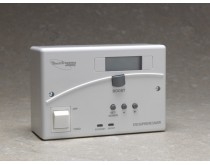The Problem with Storage Heaters

If you currently have storage heaters installed in your home, it is probably time to think about replacing them with modern electric heaters. At Electric Heating Supplies, a lot of our business comes from customers getting rid of the old and embracing the new. Storage heaters, while at one time useful for homes with no direct access to gas, are simply too ugly, bulky and expensive to warrant in place in 21st century homes. Aesthetics and size are two of the main reasons given by people looking to upgrade to state-of-the-art electric heating. However, the main grievances with storage heaters centre on running costs.
The Economy 7 Tariff
The Economy 7 tariff is the whole reason storage heaters became popular in the first place and it was first introduced in the 1970s as a way to provide homeowners with cheaper electricity. The tariff works by providing cheaper ‘off-peak’ rate electricity during the night (typically between the hours of 10 pm and 8:30 am). Storage heaters can then be used to utilise this tariff by charging overnight when electricity is cheaper and emitting heat through the day.
The problem with this tariff (besides it not being as cheap as it seems due to disproportionately high daytime tariffs) is that it makes lights and appliances such as the fridge, cooker, and television, more expensive to run, meaning you don’t really save any money at all.
Lack of Control
Modern heaters, like electric boilers, have thermostat controls that allow you to set the temperature to suit your needs – storage heaters do not have this same level of control. Getting the right heat with storage heaters relies on you being able to predict the weather for the next day – an almost impossible task.
In addition to this, storage heaters charge during the night when everyone’s in bed and emit heat during the day when everyone’s at work!
Inconsistent
Storage heaters tend to draw a lot of power in building up the surplus heat energy they need for a sustained output. However, heat is often quick to ‘leak’ without benefiting an entire room and once they’re out of heat you need to top-up, which you can’t do until night time. Some heaters do feature a ‘boost’ feature, but this is inconsistent at best.
Modern electric heaters from EHS are able to reach full temperature in just 30 minutes, after which a 10-minute charge provides around 40 minutes of heat. Better than this though, is the fact that they do not have to be charged up at all – you simply switch them on whenever you need heat.
